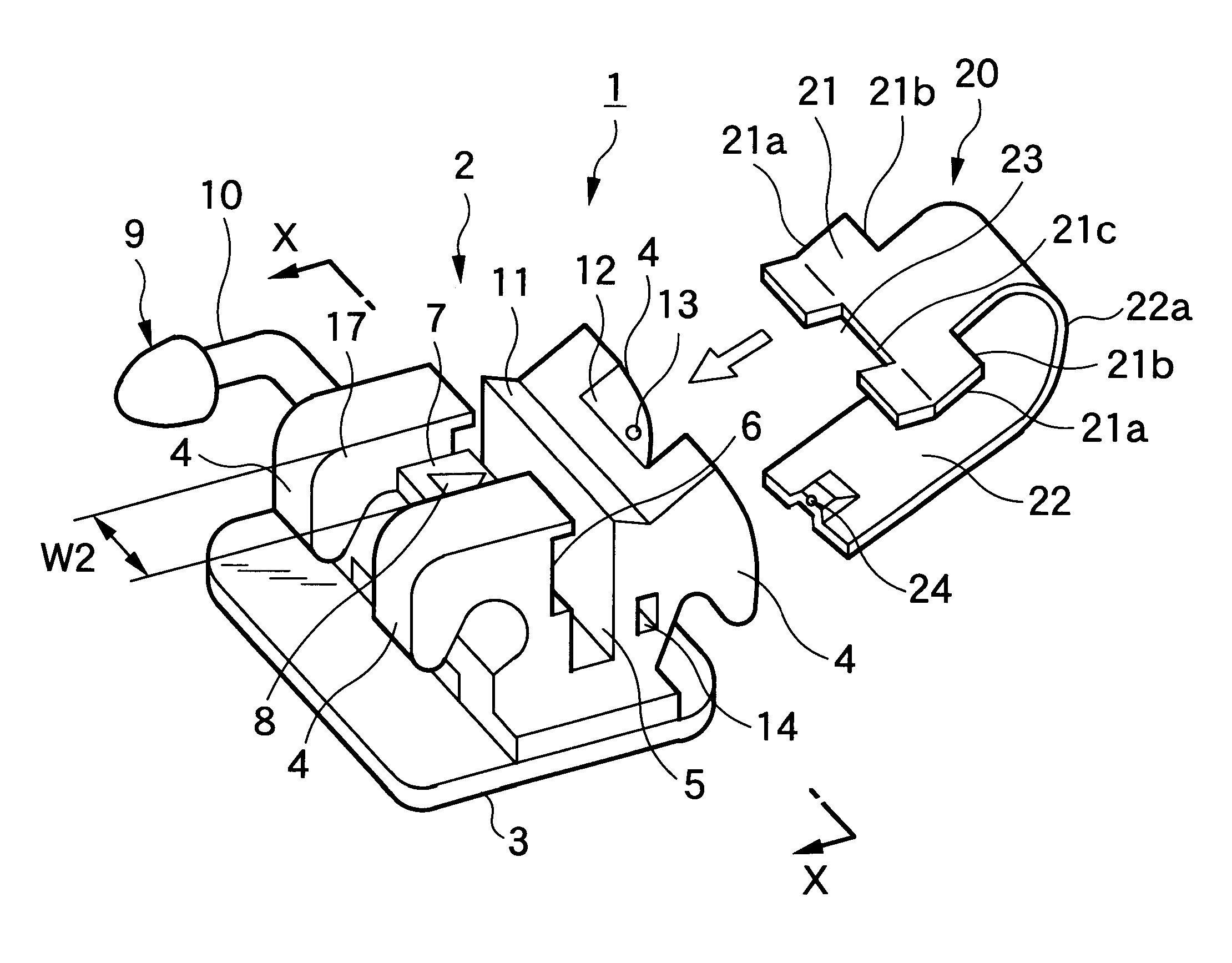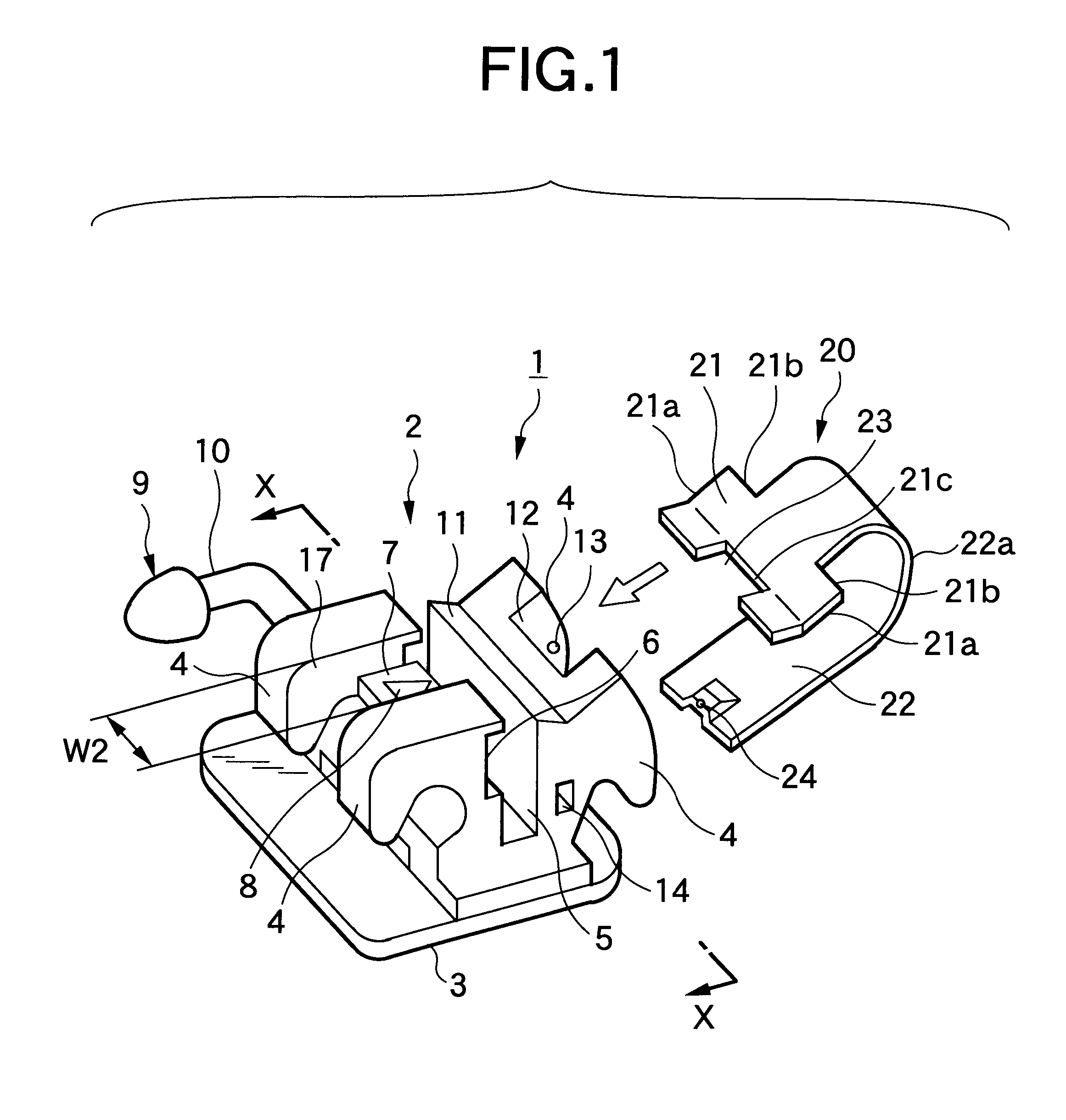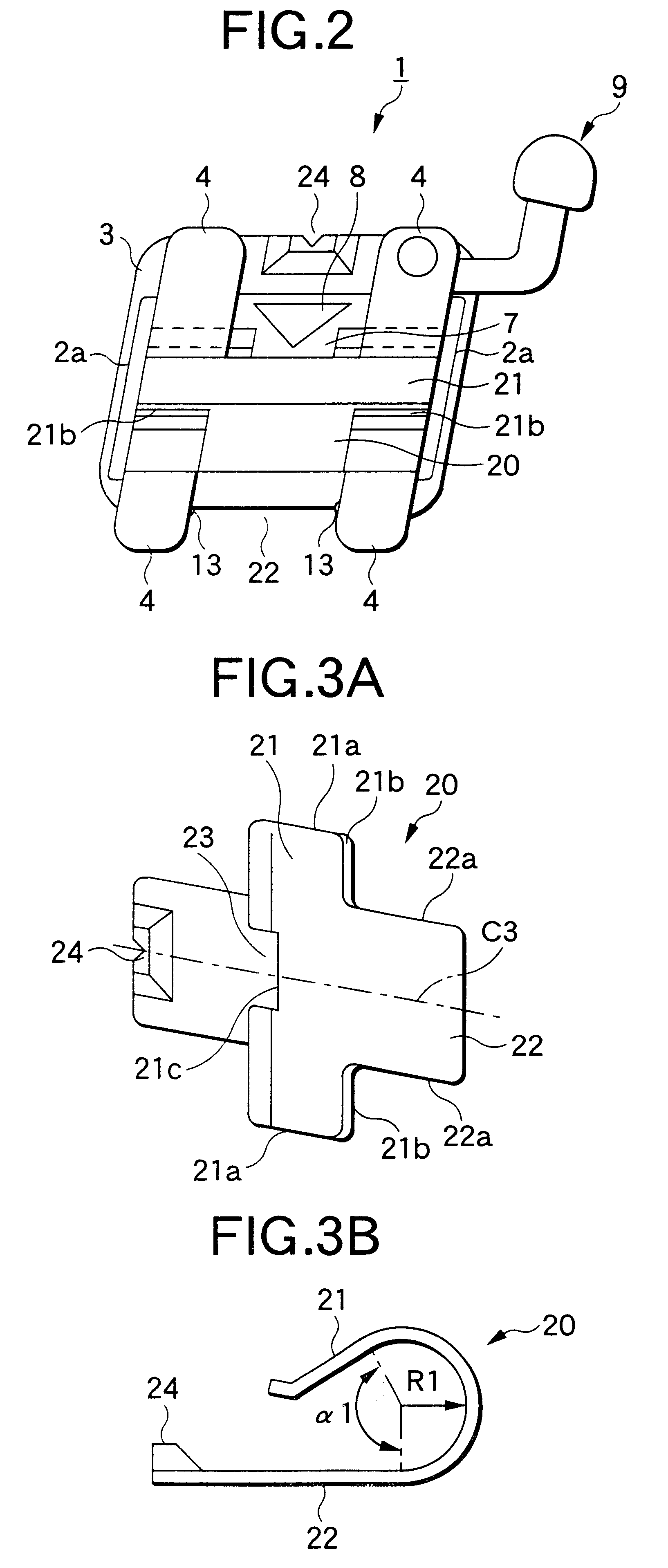Orthodontic bracket and its tool
a technology of orthodontic brackets and tools, applied in dental tools, dental surgery, medical science, etc., can solve the problems of affecting the comfort of patients, requiring a lot of chair time, and inability to eliminate the force of elastomeric ligature rings
- Summary
- Abstract
- Description
- Claims
- Application Information
AI Technical Summary
Problems solved by technology
Method used
Image
Examples
first embodiment
(First Embodiment)
An orthodontic bracket 1 in accordance with the first embodiment shown in FIGS. 1 and 2 is a twin bracket having a central groove 17 enclosed by mesial tie wings 4 and distal tie wings 4. This bracket 1 is provided with a base 3 secured to a tooth surface, a bracket body 2 extending in a substantially perpendicular direction from the base, and an arch wire slot 5 which extends in a mesiodistal direction substantially in the center of the bracket body 2 and is open in the front. The bracket 1 is provided with a locking member 20 capable of opening or closing the arch wire slot 5.
As shown in FIGS. 1 and 3, this locking member 20 is structured in a substantially U-shaped cross-sectional configuration, and one side thereof is formed as a base side portion 22 (a portion located on the lingual side) located on the base side and extending along the base, while the other side thereof is formed as a counter base side portion 21 having substantially the same width as the len...
second embodiment
(Second Embodiment)
A description will be given of a tool for an orthodontic bracket which is used for the orthodontic bracket 1 shown in the above-described first embodiment.
The tool 70 for an orthodontic bracket in this embodiment is not particularly limited to the illustrated form insofar as a first arm portion 71 and a second arm portion 72 are arranged to be appropriately continuous as shown in FIG. 8, and it is possible to adopt various forms.
In short, the tool 70 for an orthodontic bracket includes the first arm portion 71 which is a fulcrum portion for engagement with the bracket body 2 (in this embodiment, the recessed portion 8 in the upper end surface of the rib 7 provided on the bracket body 2), and the second arm portion 72 which serves as an acting portion for engagement with the engaging end portion 24 (e.g., a notched portion, a recessed portion, a projection, or the like) formed at the rear end portion of the base side portion 22 in the locking member 20.
Since the to...
third embodiment
(Third Embodiment)
Referring now to FIG. 9, a description will be given of a third embodiment of the invention.
An orthodontic bracket 91 in accordance with the third embodiment shown in FIG. 9 is a single bracket in which a bracket body 92 has a pair of tie wings 94, and this bracket 91 is consisting of a base 93 secured to a tooth surface, a bracket body 92 extending in a substantially perpendicular direction from the base 93, and an arch wire slot 95 which extends in the mesiodistal direction substantially in the center of the bracket body 92 and is open in the front. The bracket 91 is provided with a locking member 920 capable of opening or closing the arch wire slot 95.
This locking member 920 has on one side thereof a base side portion 922 located on the base side and extending along the base, and on the other side thereof a counter base side portion 921 having substantially the same width as the length of the arch wire slot 95 and extending on the upper side of the slot. The loc...
PUM
 Login to View More
Login to View More Abstract
Description
Claims
Application Information
 Login to View More
Login to View More - R&D
- Intellectual Property
- Life Sciences
- Materials
- Tech Scout
- Unparalleled Data Quality
- Higher Quality Content
- 60% Fewer Hallucinations
Browse by: Latest US Patents, China's latest patents, Technical Efficacy Thesaurus, Application Domain, Technology Topic, Popular Technical Reports.
© 2025 PatSnap. All rights reserved.Legal|Privacy policy|Modern Slavery Act Transparency Statement|Sitemap|About US| Contact US: help@patsnap.com



